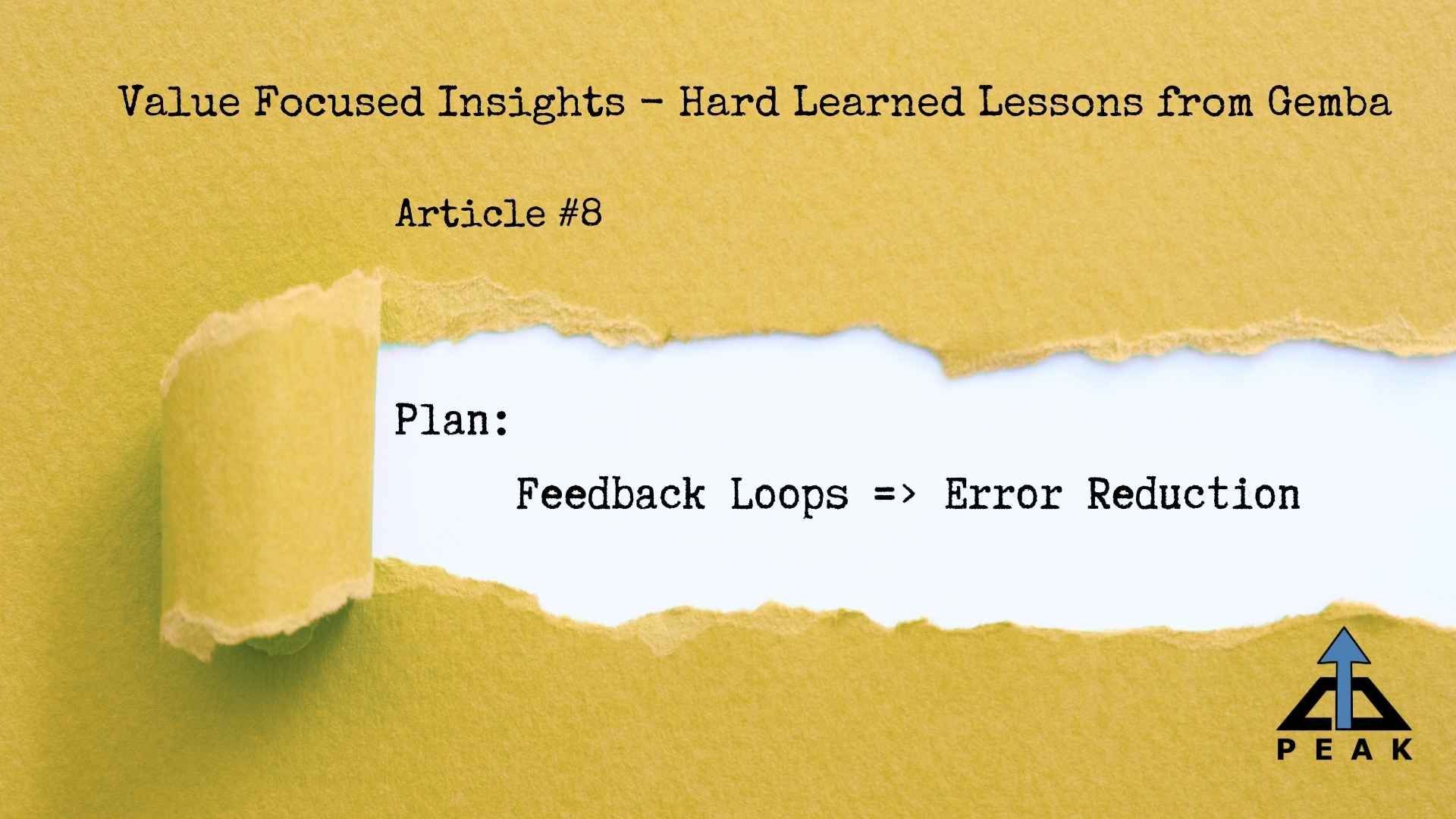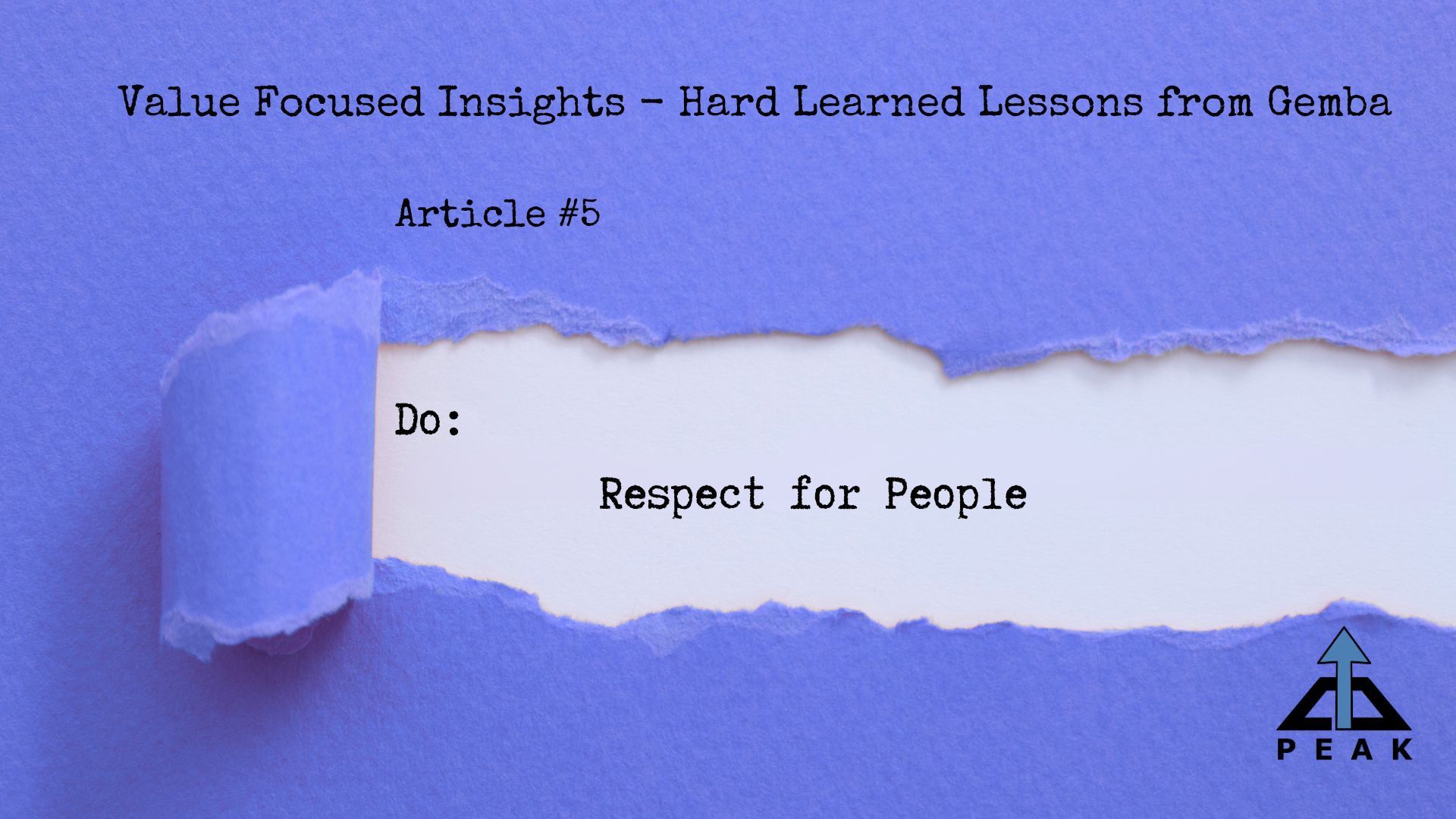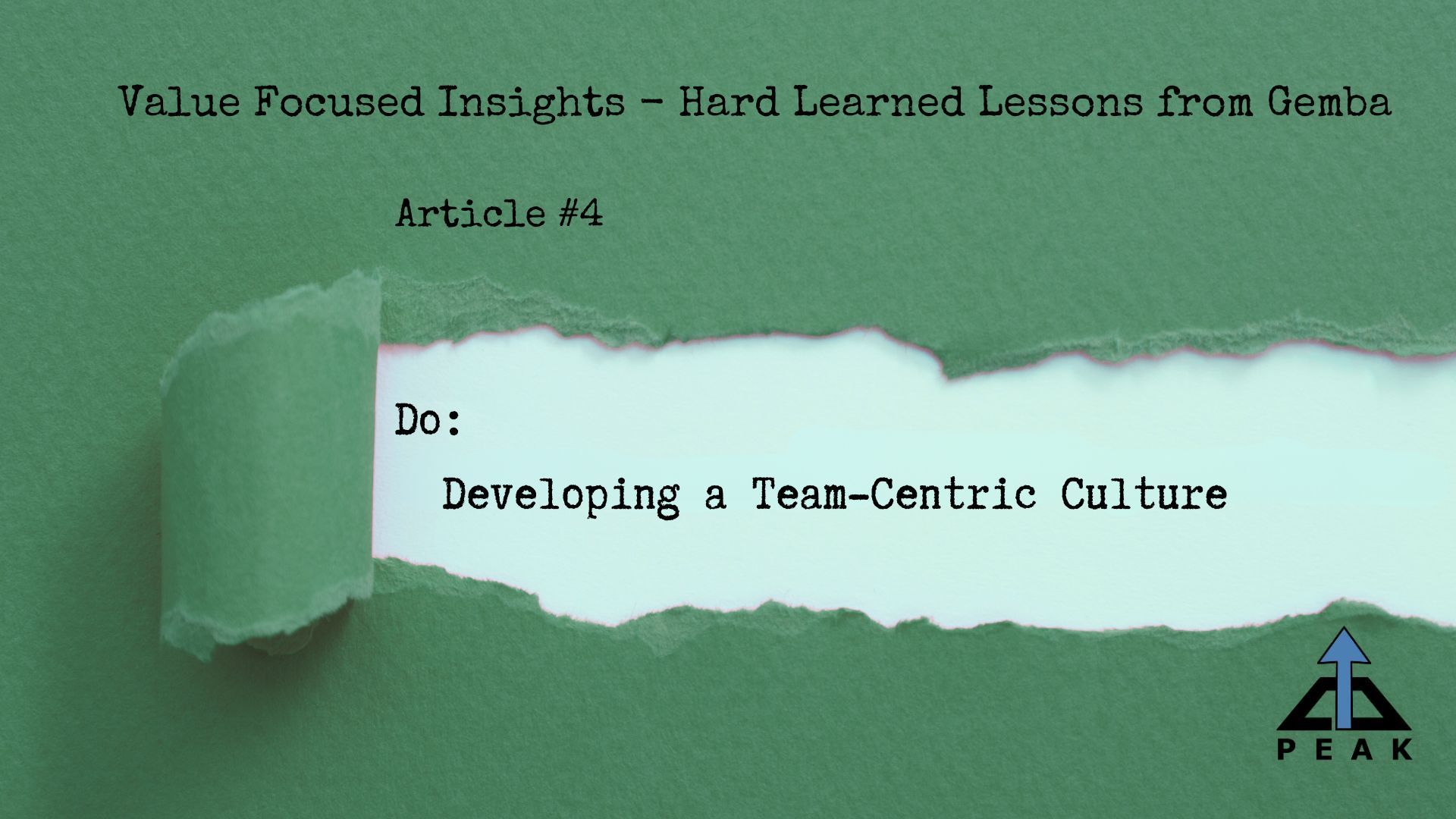Embracing Slower Times - Part 13: Team Building
Annah Godwin
Embracing Slower Times: Building Resiliency for Long-Term Successes by Building Teams
This is blog 13 in the 13-part series titled “Embracing Slower Times: Building Resiliency for Long-Term Successes”. In it, I will discuss the importance of teams and teamwork in building long-term success for your organization.
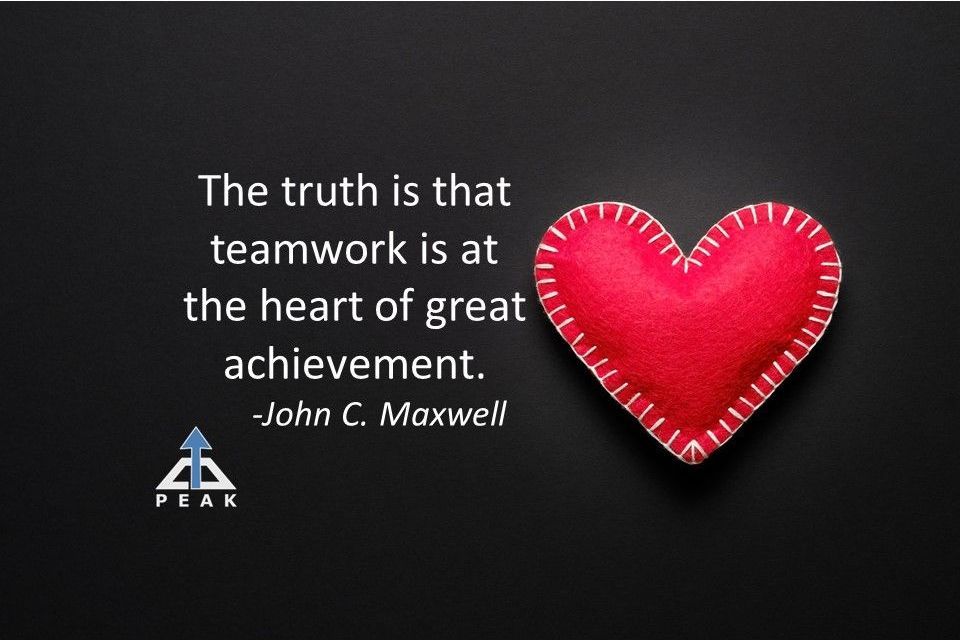
My first job was as a Lean Engineer. My sensei was very knowledgeable about lean, continuous improvement, and problem-solving. He was also very patient, especially when it came to the “new kids” like me who had a lot to learn! One of my early project assignments was to improve the flow in an area that housed a piece of equipment and included several machine operators, and material conveyance. It was the first project I led on my own and to say I was excited was an understatement! I was ready to spread my wings and begin making improvements!
Like all good project leaders, the first thing I did was to meet with my manager and sensei where we discussed the scope of the project, the current metrics, and the goals of the project. With all this information in hand, I headed to the gemba.
Over the next week, I logged several hours observing the forklifts, the operators, and their tasks on each shift. At the end of the 1st week, I had a list of solutions that would help improve the flow, so I set out to start working on implementing the list.
My first goal was to create new visuals along with updating some older ones. They helped to improve the flow by clarifying the movement and status of materials in the area. Along with the visuals, the area needed some general 5S work. After some time on the computer and a quick stop in the supply room, I was back out on the floor. I spent several hours taping, marking, and hanging labels. When it was all finished, I asked the operators and the forklift drivers to join me in a walk-through. I took time to explain the changes and discussed how the improvements would positively impact the flow. I answered a couple of questions, thanked them for the time, and returned to my office. The following day I reviewed the changes with management and my sensei and scheduled a follow-up for two weeks later. I felt like the project was going well.
During the review session, my sensei asked for my overall thoughts on the project. When I suggested it was close to completion, he suggested I perform some audits on the changes to ensure they were sustaining and to troubleshoot any issues. I agreed and scheduled some time to head back to the floor.
When I got there, I was surprised and disappointed the flow didn’t appear to have improved. The area looked better with new signs, floor markings, and added 5S, but the flow still seemed stuck. As I continued to observe the area it became apparent the solutions weren’t working and the project was in jeopardy. I needed help and knew my sensi would offer some great insights.
His recommendation was simple; a team consists of more than one individual. He went on to explain the solutions were not working because I failed to include the people working in the process. I didn’t show basic respect to my fellow co-workers by learning more about the current state, asking their thoughts about issues, and incorporating their ideas into the solutions. As I headed back to the office, I realized the project was on the edge of being a disaster instead of a success. What a way to learn about teams and the power generated when many minds work on a problem.
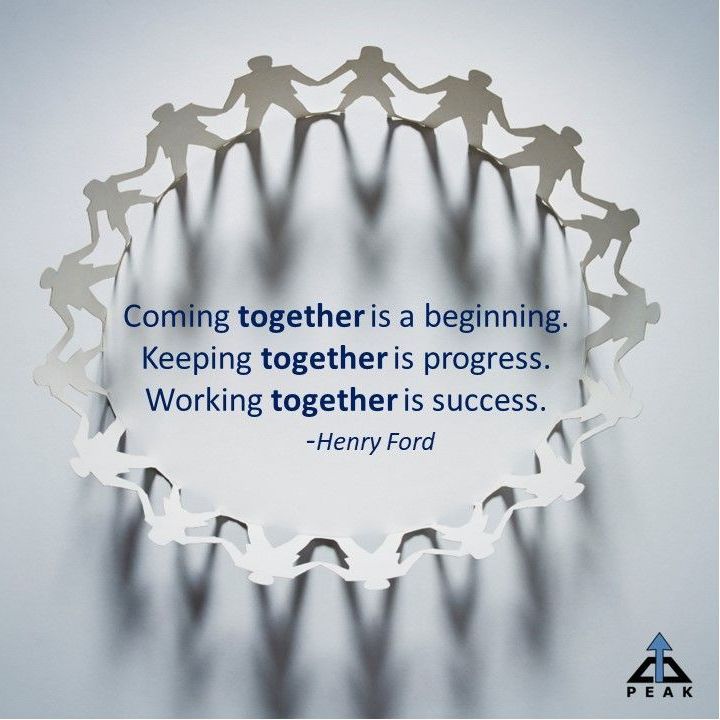
Determined to get this project back on course, I went back out to the floor. Instead of doing observations, I talked with the operators, followed them around, and had them explain what they were doing and why. In a short time, I learned that I had missed a lot of details in my observation and had minimal understanding of the process. Before I left the area, I asked the operator and a forklift driver if they would be willing to work as a team. Both were very eager and excited to assist and immediately started sharing a wealth of knowledge and ideas on what and how to improve. A couple of weeks later, the team completed the recommended changes, and it was time to see the results. This time it worked. The visuals, 5S, and process improvements helped the flow through the area. In fact, the team members had made some additional changes that drove more improvement.
At that point, it was time to have a follow-up meeting with my sensei. I remember him asking what I had learned from my experience. The answer: “Try to always incorporate others in the process improvement.” The team members were part of the conversation and part of the solutions. They provided details I could not see by watching the process alone. This lesson really stuck with me! To this day I do not like doing projects solo. I find tremendous value in building relationships with others, learning from them, and using the knowledge to collaborate in problem-solving. The input that you get from other people, the insight, the way they look at the area, and the way they process the work provides so much more depth of information.
My recommendation for anyone working on continuous improvement is to go to the gemba, select a team, talk with them, and learn from each other to grow your business for the future. Invest the time and energy to build relationships. They will help carry the company forward when demand returns. So, what are some quick ways to build better teams in your organization when demand is low?
1. Spend time hanging out in the gemba. I like working with operators performing hands-on job tasks. Rolling up my sleeves and working alongside the operators gives me so much insight into the challenges of each task. You get to see, feel, smell, and hear the good and bad contained within those tasks. It also allows me to develop deeper relationships by growing mutual respect.
2. Do a job swap. Take an operator from one area and have them go to another area to observe and learn what others do within the plant or department. Then reciprocate that by having someone from the second department go into the first department to do the same thing. The point is not to cross-train the individuals, but rather as an introduction to other areas, tasks, products, and processes.
3. Cross-train team members. Companies like to grow people's skills and increase their value. Creating the time and space for team members to learn other jobs is critical in the current job market. Prior to training, create a cross-training matrix to understand which areas are lacking coverage. Not only does this help the company by having redundancy across positions, but it can help build camaraderie and a sense of a team.
4. Have an interdepartmental team-building activity. Taking time to bring operators and departments together provides an opportunity for people to meet one another, learn, and grow. You can increase learning by having people share information about the products they make, and the steps required to make them. It always amazes me how often co-workers don’t know what other products or processes exist within the same plant.
Being on a team isn't always easy and managing a team can be difficult due to differences in opinions, personalities, job experience, how we think, and the way we see the world. But I think when you come together as a team, those differences start to blend and mesh so that weaknesses become stronger, ideas become refined, and success is more likely to be sustained. As I look back over the years, I've had the opportunity to work with some wonderful team members. We have agreed, disagreed, succeeded, failed, laughed, and cried. If you’re reading this blog and I ever worked with you on a team I want to say thank you. I have so many wonderful memories of time spent learning from each of you. You brought unique perspectives to the team and helped shape my way of thinking. I truly love teamwork.
At Peak Productivity, our approach is always team-based. Whether we're running a Kaizen event, working on short-term projects, or providing simulations and modeling, we do it as a team. If you haven't read the other 12 blogs in this series, please feel free to check them out at the Peak Productivity website. As always, we're interested in hearing your thoughts and your questions about teams and continuous improvement, so feel free to post them in the comments section.
Peaks and Valleys.....


